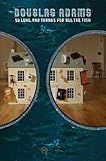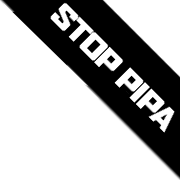Join Heidi Ann Smith, author of the family/relationships/fiction novel, The Clara Ann Burns Story (Monkee Puzzle Press), as she virtually tours the blogosphere November 1 – 23 2011 on her first virtual book tour with Pump Up Your Book!
About the Book...
In Heidi Ann Smith’s short novel THE CLARA ANN BURNS STORY, a woman who suffered child abuse looks back over her turbulent life as she approaches her fifties. Smith describes it as “a story of a young girl, Clara Ann Burns, who was tortured, abused and neglected by her family. When she was old enough to go out on her own, she got herself into situations that were not always the best. But in the end she raises her own family and holds onto the hope of healing and living without fear.”
Smith explains that the story “is based on some of my life experiences,” which included sexual abuse. “I needed to write this book–and I needed to have the right and the freedom to bring together different events.”
Rather than creating a traditional narrative text from start to finish, in THE CLARA ANN BURNS STORY, Smith–who holds one master’s degree in fine arts in creative writing, another in humanities, and is a PhD student in creative writing–chose to express child abuse and loss by experimenting with literary genre. The result is that the protagonist, Clara Ann Burns, tells her story through written memories (short stories, lists, poems, one-minute plays) and memorabilia (hospital records, photographs, personal records). All are presented without explanation: a grandmother cooks breakfast while she speaks to her deceased husband; a mother scalds her child in a bathtub; the funeral processions of John F. Kennedy and Martin Luther King, Jr.; the death of a child’s father; and the rape of a stepdaughter. This multi-genre approach, Smith feels, more accurately conveys “the impossibility of piecing together this story, and reflects the inconsistencies of an abuse victim’s memories that tend to jump from one instance of abuse to the next, rather than flowing through, perhaps, what might be considered the normal ups and downs of life.”
In addition, Smith points out, “These isolated memories of abuse that flash through Clara’s mind are what it means to have post-traumatic stress disorder. I suggest further that these isolated incidents also represent the perplexity of healing from prolonged neglect and abuse, since a constant state of fear is what is most familiar to Clara since she was abused by family members and friends for many years. If a child believes his or her own family is not adverse to his or her own torture, neglect, or rape, the child cannot survive as emotionally or psychologically intact. In Clara’s case, the abuse is pervasive, there is no relief for many years, nor hope of relief until she is an older woman and capable of looking at what happened to her objectively through the instantiation of the events as presented in the text.”
Despite the personal inspiration behind THE CLARA ANN BURNS STORY, Smith’s academic and scholarly understanding of both creative writing and fine art informs the book’s power. She likens writing to fine art: “All the great artists I studied reflected their life; in a great work of art, you cannot extricate the artist’s life from their work. When you look at a work of art by Van Gogh or Caravaggio you see some truth about their life. For me, the truth does not necessarily read like a biography; there are details that are blurred from your view. When I was engaged in the writing process, some things that were hidden from my view came out–which may grab the reader because it hit me as well.”
Smith hopes that readers who can identify with THE CLARA ANN BURNS STORY will find some comfort in it. “When I was a little girl I was very sick and I didn’t have a happy home life. I started reading poetry, and I felt some kind of resonance and a kindred spirit with the other writer’s work. I hope my work will reach someone and that they will also know that they are not alone.” And, she adds, “I also hope the work is received as a work of literature.”
About the Author...
Heidi Ann Smith grew up in the Chicago area and began publishing poems as a child. At a young age, she won various local and academic awards for her writing; based on her writing abilities, she was awarded a scholarship to a private high school and attended college courses during her high school years. After high school she began raising a family and was taken away from her writing, but soon returned to complete a Bachelor of Arts from Eastern Illinois University. She then earned a Master of Arts in Humanities from California State University and a Master of Fine Arts in Creative Writing from Goddard College. Several of her poems recently found homes in various journals, and she published a scholarly thesis on the German artist George Grosz. Heidi is currently a PhD student studying Creative Writing at Middlesex University in London, England. THE CLARA ANN BURNS STORY is her first novel.
You can visit the website at www.monkeypuzzlepress.com.
In Heidi's own words...
What Is Creative Writing?
I am a creative writer and by this I mean to suggest that I engage in the artistic practice of creating ‘creative writing theory’ through the making of a work of art. What I am suggesting here isthat a work of creative writing ‘arises’ from the artistic practice and is not simply anything written on the page. Some may counter this argument by taking a similar position as Marcel Duchamp with his “Fountain” (1917) or other ‘readymade’ art proponents who argued in the early 1900s that anything ‘chosen’ by an ‘artist’ is a work of art. If one will recall, Duchamp proposed that a urinal is a work of art simply because he ‘chose’ to submit the urinal to an art exhibit that claimed the exhibition would display all works submitted. Duchamp signed the urinal with the pseudonym ‘R. Mutt’. I would argue rather that the work of art was the designer of the urinal and by Duchamp’s ‘choosing’ the urinal Duchamp was contributing to the making of the ‘ready made art theory’. However, I would argue that one may want to keep in mind that the ‘ready-made art theory’was created during the early 1900s and that if one chooses to suggest a work of art that is created today is aligned with the ‘ready-made movement’ I would ask – where is the creation of an art theory or how has this added ‘ready-made’ work contributed to the development art theory today? ‘Choosing’ an object such as a store receipt does not necessarily instantiate the receipt as ‘an artistic text’ unless one could argue that the receipt is evidence of an art theory that is making a contribution to the field of creative writing as we enter into the 21st century.While it may be true that almost anything affiliated with a famous artist may be of monetary value an object’s association with an artist does not automatically make anything a work of art. What I mean by this is that a grocery list written by Duchamp’s is not the same as “Nude Descending a Staircase” in that the latter is reflective of an art theory and the former is reflective of a grocery list written by Duchamp. If this is not the case, then could we not also argue, for example, that the poet Mark Strand could choose a store receipt and sign his name to it and suddenly the store receipt would become a creatively written artifact? While Mark Strand’s store receipt may be affiliated with the famous poet, and therefore may be of value, history demonstrates that monetary value or affiliation with a famous artist does not necessarily translate into a work of art. Vincent van Gogh, for example, sold only one painting in his lifetime and the value of Friedrich Nietzsche and Charles Pierce’s writings were not recognized until after their deaths but it is common knowledge that the works of these artists are deeply rooted in aesthetic theory. I propose further that the work of Vincent van Gogh, Nietzsche and Pierce demonstrate that the artist informs the field of artistic practice through the ‘making’ of a work of art not the viewer/reader. Let us recall that that philosophy and art theory have long history. If this is not the case, then I suggest, we might want to ask: how was van Gogh’s “Starry Night” altered by the viewer’s ever increasing appreciation of it? While some may propose that anything written is a work of art, I would argue along the lines suggested by Deleuzewho suggested that a work of art is molded by a skilled and practicing artisan and that a work of art itself ‘causes sensations’ or ‘affects’ regardless of the viewer. Is a tree in a forest - a tree in a forest – even if there is no human to view it? By this I mean to ask if a work of art is a work of art even if the public has yet to view it? Some may want to retort to my postulations,as suggested above, by arguing along the lines that a machine is a work of art. I would argue rather, that although a machine may be a work of art a machine is incapable of creating an art theory. While a machine may represent an art theoryit is never the creator of an artistic theory. Artists are creators of art theories that arise in the ‘making’ of the work of art.
** Thank you most kindly Heidi for stopping on by our Mad Marsh...we wish you all the best in success and may your find happiness wherever you go~!! **



























































No comments:
Post a Comment
Please leave us some love...and have yourself a groovy day~!! Peaces...xoxo